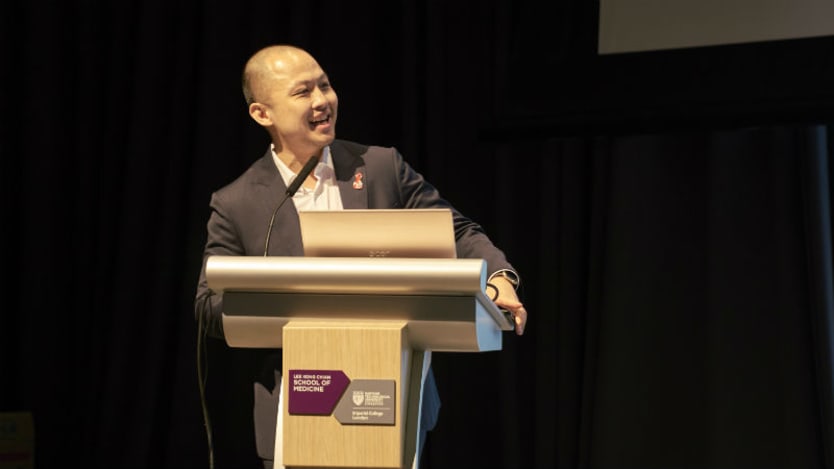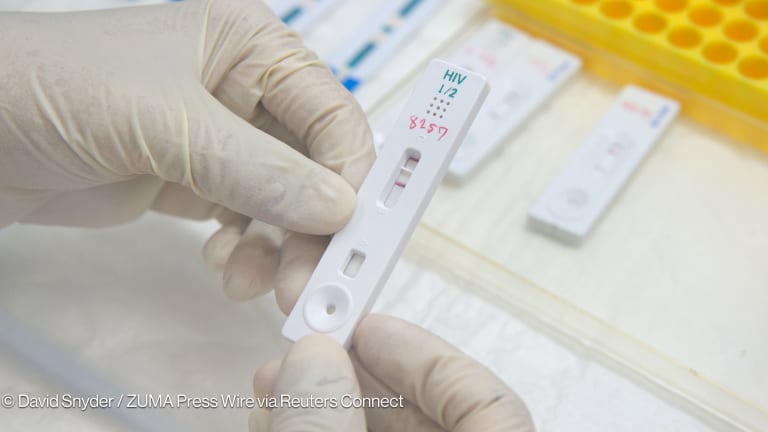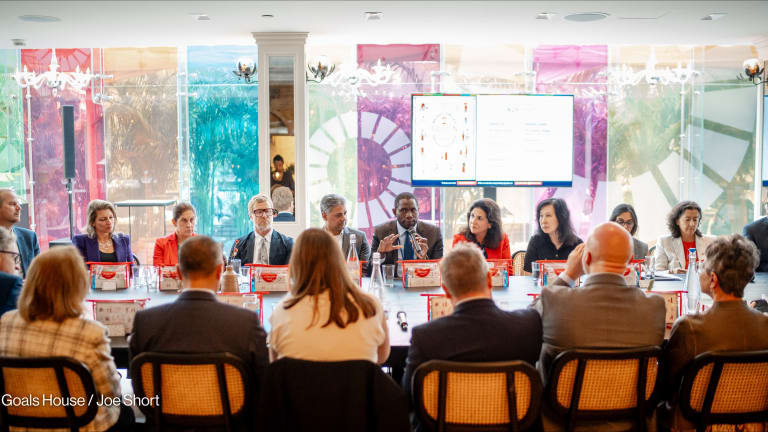
As 2030 edges closer, those working to prevent and treat HIV are starkly aware of the goal to eliminate the condition by then. Calling it an idealistic and optimistic target, Dr. Wong Chen Seong, an infectious diseases consultant physician and head of Singapore’s National Centre for Infectious Diseases’ clinical HIV program, believes that — as a goal for the global HIV-care community — it’s unlikely to be achieved, but says it still has a purpose in unifying efforts.
“If you ask me if I believe that we’ll see an end to HIV globally by 2030, the answer is no, but I remain cautiously optimistic that, in some places around the world, that’s possible,” he said, adding that the tools needed to end HIV are already available.
“What stands in the way of it? Access issues which are tied to vast disparities in terms of access to resources, which once again are tied to sociopolitical issues that really require a common will to overcome,” he continued. “More importantly, we are hampered by archaic, harmful laws and norms that stigmatize and discriminate against people living with HIV and those who are disproportionately at risk of HIV, making them unlikely to access information, testing, or care.”
“If we don’t address these entrenched inequalities between genders, sexual minorities, economic minorities, and ethnic minorities, then our goal of ending HIV will be a difficult one to achieve.”
— Dr. Wong Chen Seong, head, Singapore’s National Centre for Infectious Diseases’ clinical HIV programWong called upon the global health community to do more to understand the needs of specific key populations living with HIV, address issues of mental health and addiction management, and empower people living with HIV to be part of the conversation when it comes to policymaking around HIV-care services.
“If we don’t address these entrenched inequalities between genders, sexual minorities, economic minorities, and ethnic minorities, then our goal of ending HIV will be a difficult one to achieve,” he said.
Speaking to Devex, Wong explained the progress Asia is making in terms of tackling HIV and what lessons can be learned from Singapore.
This conversation has been edited for length and clarity.
Thinking of Asia specifically, do you think it is one of the geographic locations that’s likely to make advances toward HIV elimination by 2030?
Yes and no. I think there are some places in Asia where it’s within our ability to put an end to new infections. In places with a relatively low prevalence or burden of disease, like Singapore for example, we are working very hard on all fronts, whether it’s increasing our diagnosis rate, reducing our late diagnosis rate, and getting everyone on effective treatment — which is increasingly becoming almost universally available and accessible.
How to address HIV/AIDS stigma in health facilities to achieve UHC
Reducing HIV/AIDS stigmatization and discrimination is critical if the 90-90-90 target is to be achieved by 2020. Devex explores some of the most impactful strategies.
Other places in Asia where it’s possible that the epidemic can come under control are those where there are existing, excellent health infrastructures — the bigger economies, like Japan and South Korea, for example — or in places where they are very active, internationally connected, and scientifically very cutting-edge — places like Thailand that have always been at the forefront of addressing HIV/AIDS as a national epidemic.
At the same time, there are places in Asia where I don’t think it’s even clear what the scope of the problem is, and where many of the key populations disproportionately affected by HIV are still institutionally or organizationally discriminated against — either because homosexuality is still criminalized, or because of draconian drug laws that make people who inject or use drugs less likely to seek care. In these places, I think the epidemic will be harder to bring under control.
What would be your recommendations for addressing some of these problems?
We won’t be able to get anywhere unless legislations that affect people living with or at risk of HIV are changed to a point where conversations around HIV prevention, and access to health care in general, becomes easier to happen. I’m talking about laws that criminalize homosexuality, disproportionately or over-severely target people who use drugs and inject drugs; laws that criminalize sex work and discriminate against people of challenging socioeconomic circumstances.
In many settings in Asia, conversations around sex positivity and safe sex are also difficult to have. Without that, the message of prevention becomes quite challenging.
We must also talk about innovations in HIV prevention, and primarily that of biomedical prevention. We know prevention works. It works for heterosexual people, it works for men who have sex with men, for transgender women, but getting these conversations at a national level, and not just relying on conventional messages of abstinence and condom use — which are important and should continue to be part of a holistic and comprehensive prevention message — is difficult.
I think countries, societies, and populations in Asia also need to be committed to taking concrete steps to address social and institutionalized stigma faced by people living with HIV. Even in some of the more developed economies, the proportion of people living with HIV who present late is high because they do not have enough knowledge, or because the very act of stepping into a testing site is so intimidating.
Positive examples should continue to be highlighted. I think that the scientific community specifically should continue to try to push the needle by presenting the evidence that we already have and that continues to be generated through trials and studies; continuing to discriminate against people only leads to poor outcomes.
Would you say that there are key lessons to be learned from Singapore around its HIV response?
Working closely together with community partners, policymakers, and clinicians on the ground is a strategy that have seen results in terms of bringing down the number of new cases. In 2018, we saw an almost 30% reduction in the number of new HIV diagnoses that were reported.
The second message that I think people can learn from Singapore is that we have a health care system that tends to the needs of our patients, provides access and availability of treatment. And the country has developed a model of financial assistance — especially for patients who wouldn’t necessarily otherwise be able to afford treatment — which has evolved fairly rapidly, together with the changing needs of people living with HIV in Singapore. That’s largely due, in part, to the responsiveness of the Ministry of Health, especially when it comes to hearing on-the-ground feedback from clinicians and patients.
We know the patient point-of-view is important in making those decisions at a health system level. How can they be better brought into that process?
Doing that is both easy and very difficult. We should be making a conscious effort to ensure that at every level, when we’re making decisions about how to provide care for people living with HIV, people living with HIV should be in those discussions.
In countries where policymaking and governance has largely been left to a group of either technocrats or autocrats with less of a tradition of community participation, it may require some degree of paradigm shift. In a Singapore context, it means addressing larger questions such as HIV stigma because asking them to be part of the discussion requires being identified — perhaps publicly. So few are publicly out about their HIV status because it is quite difficult.
On one hand, the entire system needs to change and evolve to a point where it’s not something you need to hide anymore, and then the next step is to say, “Not only do we not want you to hide, we want you to be part of the discussions.” But they should not be engaged in a tokenistic way. The work that they've been doing, the needs they have, should be taken and woven into the fabric of health and social policy.
Click here to find out more about Gilead’s Asia Pacific Rainbow Grant.








